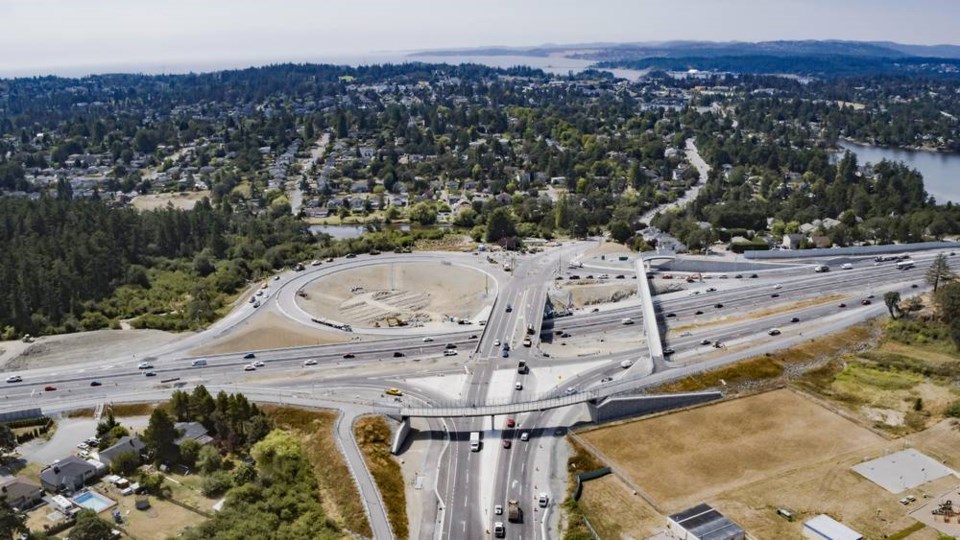Reducing dependency on vehicles and supporting clean-air initiatives are major goals of the South Island Transportation Strategy, released Friday.
Ministry of Transportation Claire Trevena said that improving transportation networks so people and goods can move more efficiently is another important part of the document.
The ministry said that over a million trips are taken each day in the capital region, close to 70 per cent of them as a driver or a passenger in a vehicle. That makes expansion of transportation options another goal, since the population of southern Vancouver Island is expected to grow by more than 23 per cent in the next 20 years.
On Friday afternoon, many of the major transportation stakeholders in the region said they were still digesting the strategy. But those who had scanned its contents said it was light on concrete steps, focusing instead on goals, strategies and pledges to continue “exploring” options.
They said it made little mention of progress on options such as a marine commuter system to the West Shore or the future of the E&N rail corridor – the strategy only says it will continue to explore those over the long term.
“That should have been in there,” said Bruce Williams, chief executive of the Greater Victoria Chamber of Commerce.
“There’s some indication about what they intend to do but they don’t say how and when they intend to do it.”
Williams said the focus seems to be on the West Shore, which is fair given that’s where the growth in the region is, and he applauded the focus on Indigenous communities.
He said the region’s First Nations have not had full access to transit services, which for years has limited their access to education, shopping, safety and health care.
“If they are implying they will establish full transit service for the nations, then that’s pretty cool,” he said.
Throughout the strategy document, the need for a collaborative approach to transportation is repeated, but there doesn’t appear to be a concrete plan to establish a regional approach to planning and delivery.
John Wilson, chief executive of Wilson’s Transportation and chair of the Chamber, said the organization has been pushing for years to establish a new transportation governance model for the whole fractured region, as it’s the only way to get things done.
And while terms such as “collaborative” and “integrated” sound good, getting 13 municipalities and other entities on side to determine transportation priorities is a whole other matter.
The strategy says the transportation network already in place features the Island Rail Corridor, the Swartz Bay and Mill Bay/Brentwood Bay ferry corridors, the Trans-Canada Highway/Douglas Street bus corridor and four regional trails — the E&N, Galloping Goose, Lochside and Trans-Canada/Great Trail.
Capital Regional District chairman and Saanich Coun. Colin Plant said the strategy is “a good start” with its medium- and long-term outlooks. He said the CRD is particularly interested in advancing active transportation and in investments that tie affordable housing to connected mobility corridors.
Another goal of the strategy is improving transit. B.C. Transit chief executive Erinn Pinkerton says she’s pleased to see a focus on public transportation as an option that’s better for the environment and reduces congestion.
Other major points include:More charging stations for electric vehiclesAdding bike lockers at key locationsMore park-and-ride stalls in the CRD and Cowichan Valley Regional DistrictEncouraging expansion of inter-regional trails in the CRD and CVRD
The ministry said work on highway infrastructure will continue while activity around the strategy gets started at the community level. Things like roads, bridges and interchanges will be designed and built with pedestrians, cyclists and wheelchair users in mind.
Current projects being worked on include Patricia Bay Highway/Keating Cross Road, Leigh Road/Trans-Canada Highway and improvements to Highway 14 near Sooke, along with final touches on the McKenzie interchange.
The strategy is intended to bring transportation, regional growth planning and land use together.



